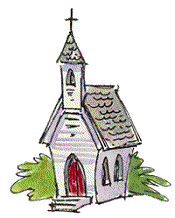
Peter Klein asks a great question:
James Emery White, president of the highly regarded Gordon-Conwell Theological Seminary, is thinking about Ronald Coase. In a year-end reflection he writes that the most important phenomena of 2006, for religious organizations, may be the wiki, the blog, and the virtual firm.
[W]hat began with eBay, MySpace, Wikipedia and YouTube may not stop with revolutionizing how companies such as Goldcorp or Proctor and Gamble operate (or are even identified). The heart of the change involves the ever-widening rejection of professional/intellectual elites, and the diminution of those organizations which exist as either the gathering of such elites, or serve as the repositories of their supposedly exclusive knowledge. Further, those organizations that were once thought necessary for basic transactions of other natures — such as communal transactions — may also face a rude awakening.
Such as the church.
As posed by [an article in] USA Today, “So if a core reason companies exist is to lower transaction costs, what happens if that reason goes away?” Do we have reasons for such institutions as a school, newspaper, court of law, or church beyond “transaction costs?” And my great fear is for the church, particularly in light of the woefully inadequate and often heretical ecclesiology present within the Christian faith at large which is already reducing both the value and definition of the church to utilitarian forms.
The economics of religion is a growing field (see Larry Iannaccone’s resource page), but I’m not aware of much work by economists or sociologists on the impact of technology on the existence, boundaries, an internal structure of religious organizations. Any suggestions?
Unfortunately, I'm at a loss here. This is a very good question and some great observations by Dr. White. I have heard academics discuss how technology may have an impact on the rise of mega-churches, but never in terms of technological impact on transaction costs and how they will alter church organization. I recently wrote a paper on church property allocation and transaction costs, but hadn't thought about incorporating technological analysis into the mix. I'll have to think about if it would be appropriate to add to my analysis and if so, how?
According to Dr. White, it should move churches in the opposite direction -- looser organizations rather than larger? In some sense, even with the mega-churches, that is what is going on. "Church shopping" seems to be much more prevalent than in the past and denominational loyalties are much weaker than they used to be.
Northland, a church I was involved with in Orlando, is trying to adopt a decentralized church model that they call "The Church Distributed". Basically, this is the notion of using technology to unite a vast network of large and small churches, congregations, pastors, and individuals aroudn the world in a way that allows resources to be shared, community developed, and connectivity encouraged. Northland is attempting to take advantage of lowered transaction costs to organize in more networked ways that were never possible before. In a very real sense, this is almost like the Christian equivalent of moving towards operating without an actual firm and instead relying on less traditional denominational structures -- flatter and leaner rather than hiearchical. I wonder, could the Willow Creek Association be viewed in a similar way?
The hiearchical denominations are the first ones getting hit and most of them are now in varying forms of trouble. It will be curious to see what happens next, how accurately technology and transaction cost analysis can be used to understand these trends, and how Christians respond to all of this.
See My Previous Posts on the Economics of Religion:
No comments:
Post a Comment